The New York State Thruway Authority has replaced the old bridge with a new 3.1-mile state-of-the-art, twin-span bridge across the Hudson River between Rockland and Westchester counties.
The $3.98 billion Governor Mario M. Cuomo Bridge is one of the largest single design-build contracts for a transportation project in the United States. Located less than 20 miles north of New York City, the cable-stayed span crosses one of the widest parts of the river and is the longest bridge in New York State.
The Latest
The Westchester-bound span is fully open to traffic and features four general traffic lanes, emergency shoulders and a dedicated bus lane. Four traffic lanes are also operational on the Rockland-bound span, while construction continues on the bicycle/walking path.
View The Latest Progress Updates
Why Replace the Tappan Zee Bridge?
The Governor Malcolm Wilson Tappan Zee Bridge opened to traffic in 1955 and, until its retirement on October 6, 2017, was a vital artery for residents, commuters, travelers and commercial traffic. Bridge traffic grew to about 140,000 vehicles per day in 2016, far more than the Tappan Zee was intended to carry. Heavy traffic, narrow lanes and the lack of emergency shoulders had the potential to create unsafe driving conditions. As a result, the bridge had twice the average accident rate per mile as the rest of the 570-mile Thruway system. Hundreds of millions of dollars were spent to maintain the structure in recent years, and the cost of maintaining it for the foreseeable future rivaled the cost of the new bridge, with no improvements to current traffic conditions. The New York State Thruway Authority retired the bridge on Oct. 6, 2017, after nearly 62 years of service.
A Sensible Solution
The Governor Mario M. Cuomo Bridge will mean less congestion and frustration for motorists, with eight general traffic lanes and space for disabled vehicles, emergency responders and buses. The new twin-span crossing will also be mass-transit ready, designed to accommodate future commuter rail and feature a state-of-the-art traffic monitoring system. There is also a shared-use path for bicyclists and pedestrians.
From Dysfunction To Construction
Plans for a new bridge to replace the Tappan Zee were first discussed in 1999, and over the following decade, $88 million taxpayer dollars were spent, 430 meetings were held, and 150 concepts were considered – yet still, the project did not move forward. Under Governor Andrew M. Cuomo’s leadership and with the support of President Barack Obama and U.S. Department of Transportation, the project has moved from dysfunction to construction. Since October 2011, new design-build legislation was enacted, a fast tracked federal environmental review and concurrent procurement processes have been completed, a project labor agreement with construction unions was negotiated, and construction activities commenced – all with an unprecedented level of transparency and community involvement.
Preserving The Environment
Extensive measures were in place throughout the project to protect the environment and to monitor the impact of construction on surrounding communities. Wildlife in the Lower Hudson Valley is rich and diverse, featuring endangered peregrine falcons, Indiana bats and Atlantic sturgeon. As a result, it is necessary for large-scale operations like the New NY Bridge project to undergo an extensive permit process to help protect these creatures. The project team worked closely with the National Marine Fisheries Service, the New York State Department of Environmental Conservation and several other oversight agencies to establish the highest environmental standards and minimize the impact on the local environment.
More About Environmental Stewardship
The Bottom Line
The project cost is approximately $3.98 billion.
The Design-Builders
The bridge was designed and built by Tappan Zee Constructors, LLC (TZC), a consortium of design, engineering, and construction firms, including Fluor, American Bridge, Granite Construction and Traylor Bros., along with key design firms HDR, Buckland & Taylor, URS, and GZA.
-
Recent Construction Highlights
-
Lowering of TZB West Anchor Span – May 2019
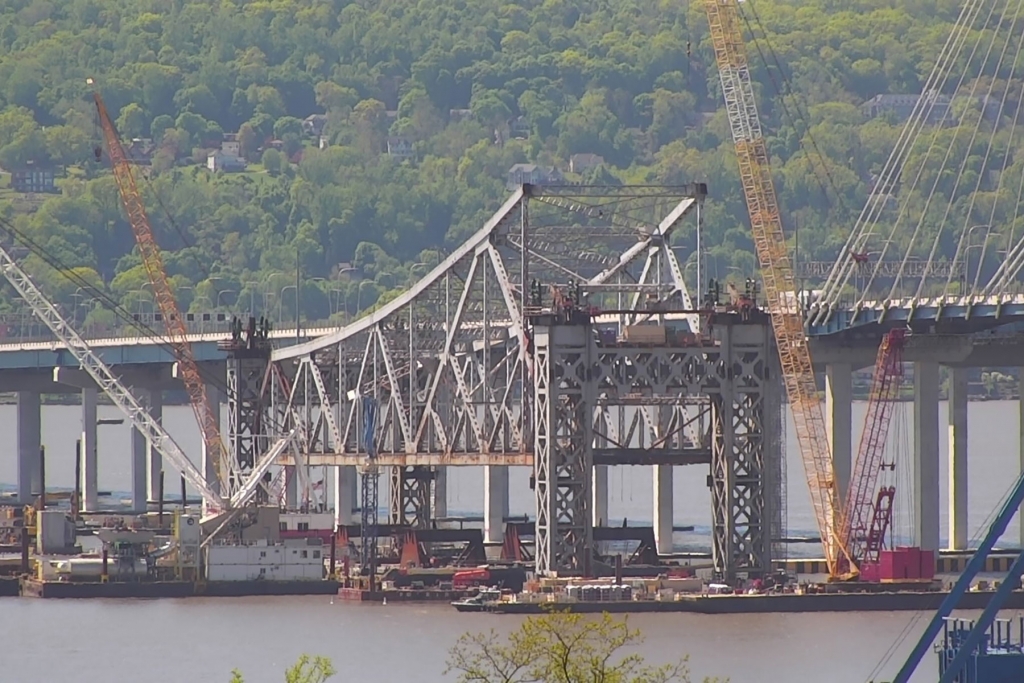
-
Controlled Demolition of TZB East Anchor Span – January 2019
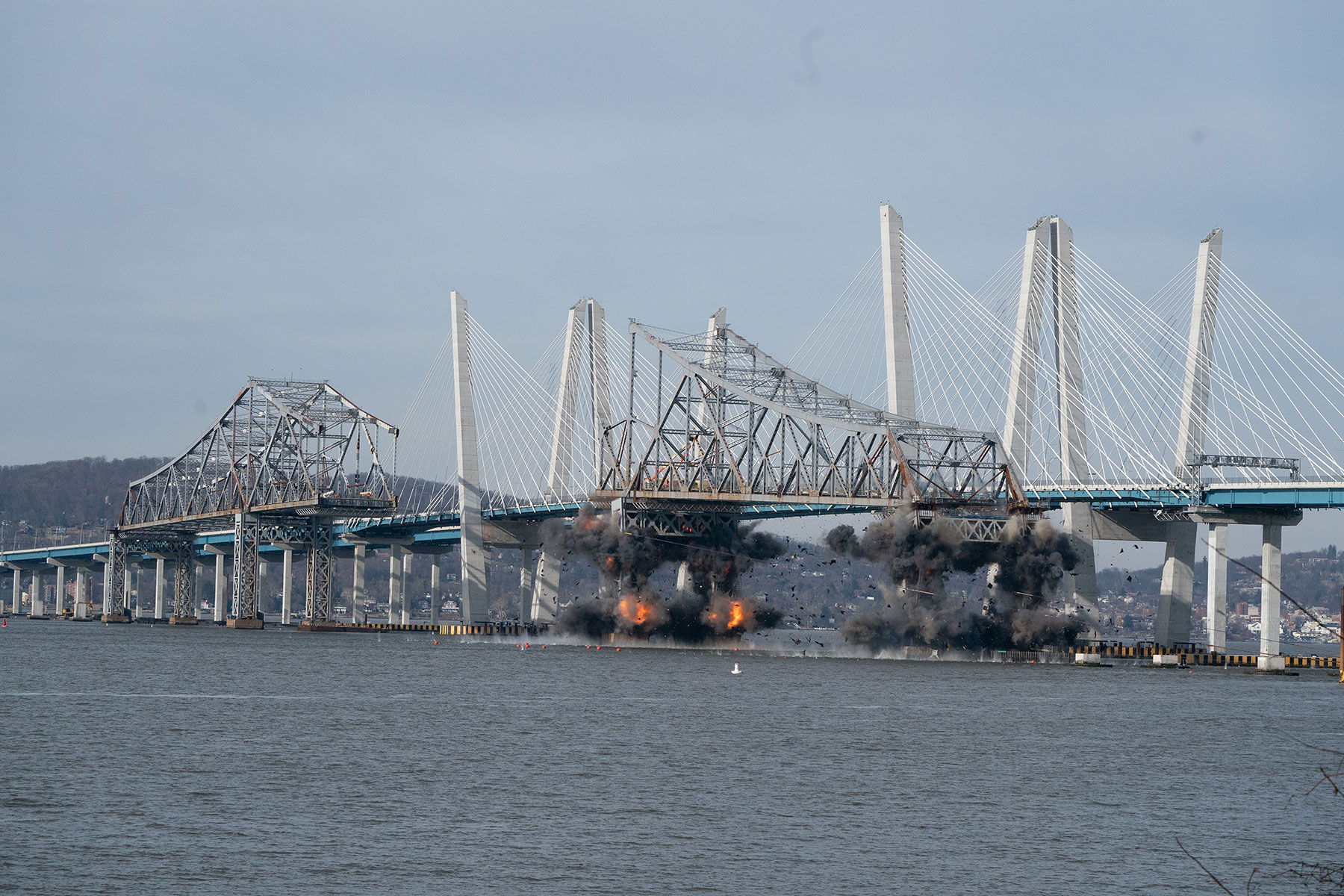
-
Eastbound Span Bus Lane Opens – October 29, 2018
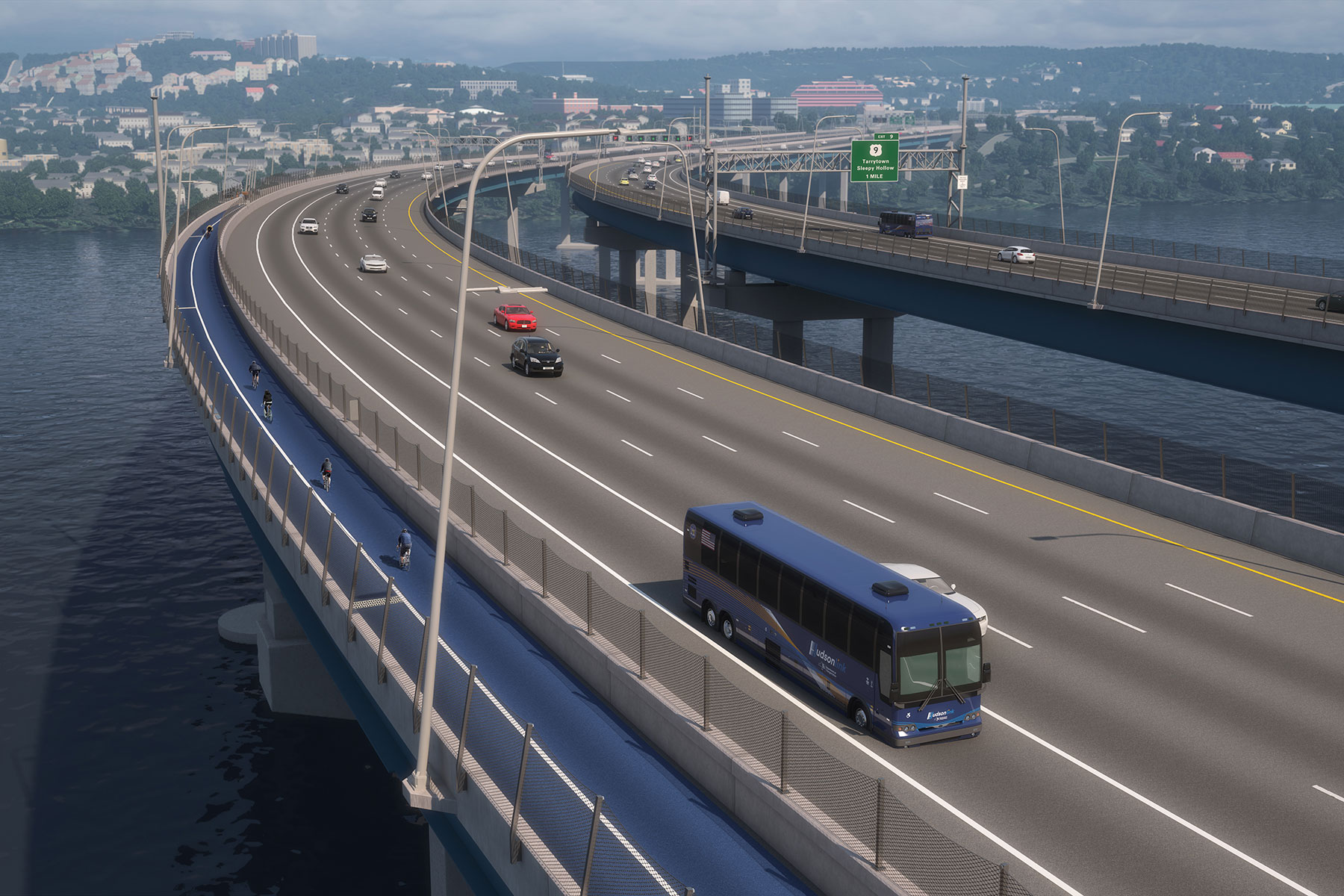
-
Eastbound Span Opening Ceremony – September 7, 2018
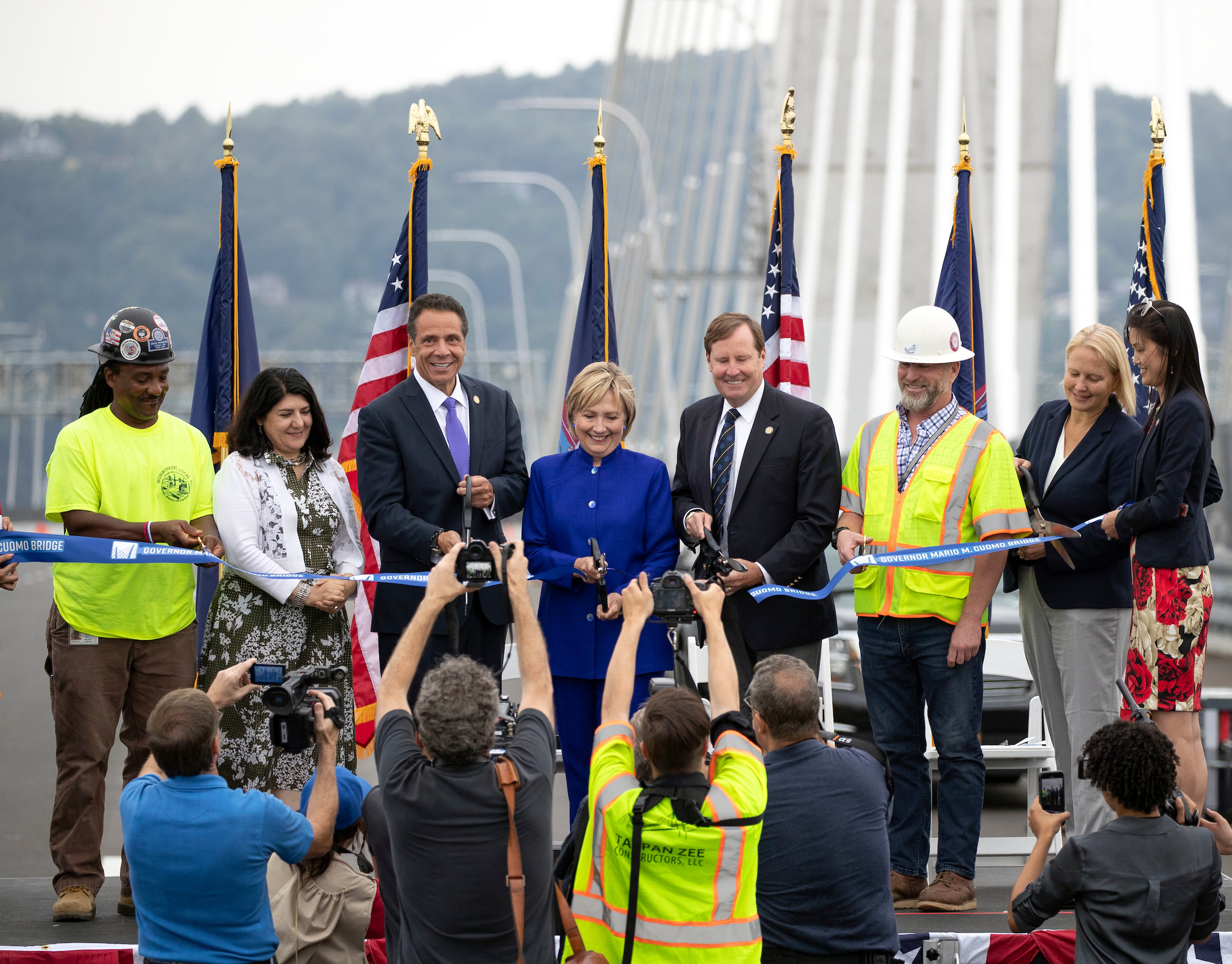
-
Bike/Pedestrian Path Landing Work Begins – August 2018
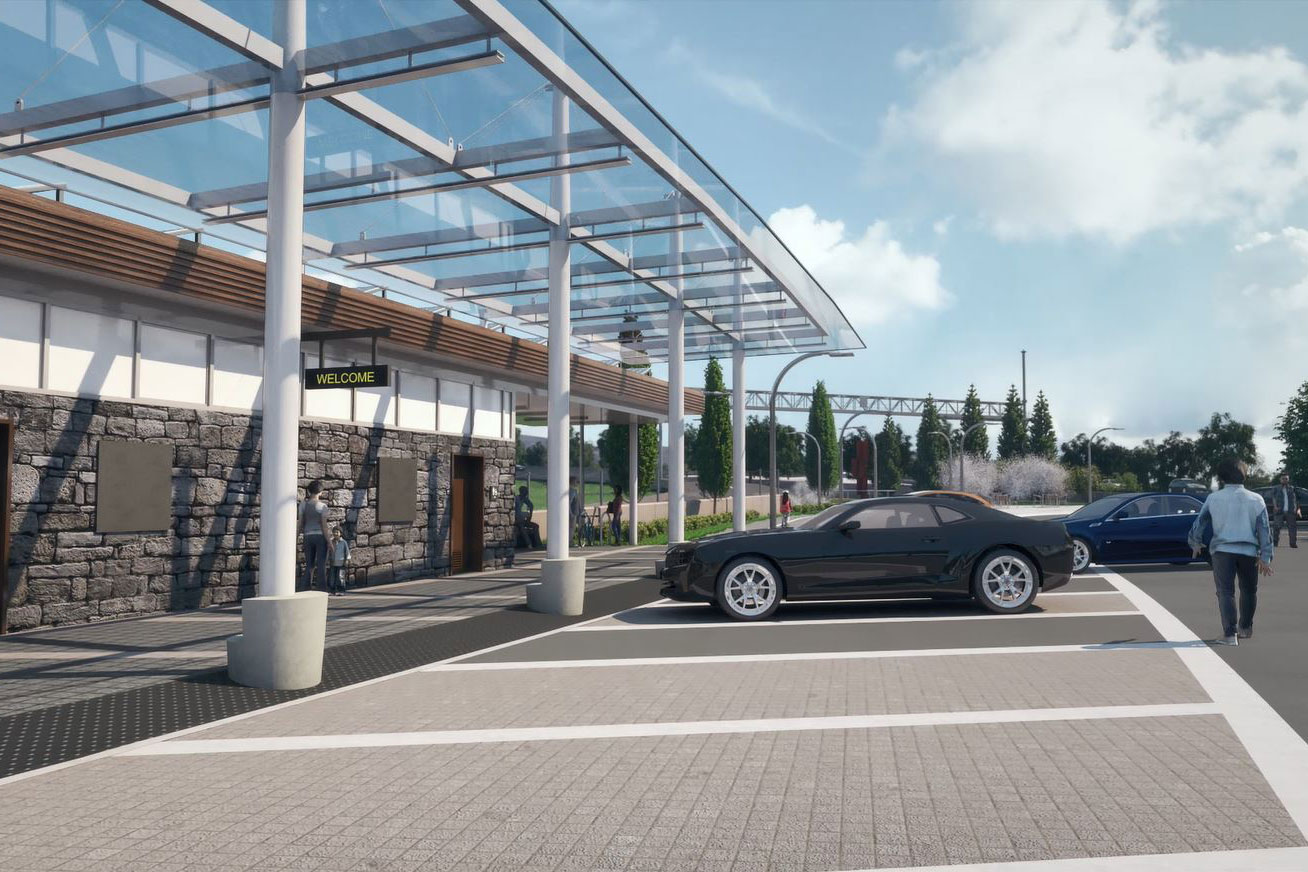
-
Final Deck Panel Installed – July 2018
-
Structural Steel Completed – June 15, 2018
-
Old Bridge’s Center Span Lowered – May 8, 2018
-
Final Girder Assembly Installed – April 12, 2018
What do you need to build a New NY Bridge?
